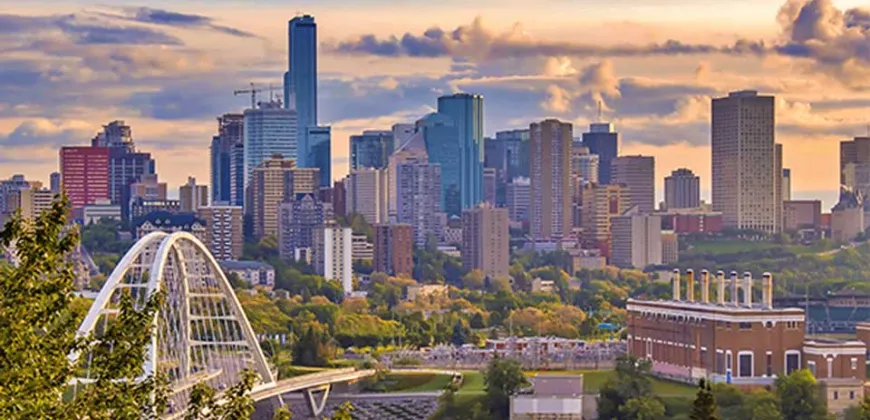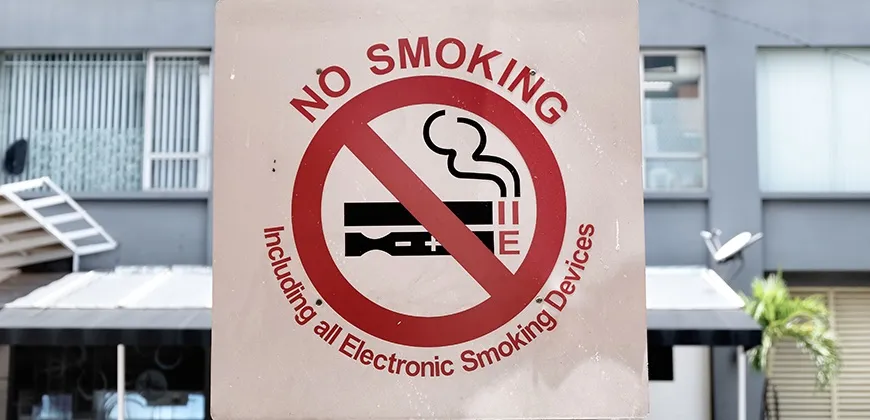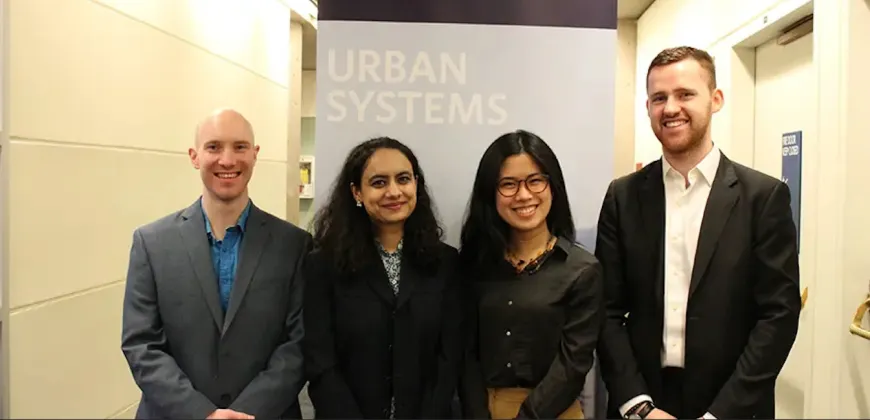Developing innovative urban planning ideas for a sustainable community
Urban planning to support a city's environmental, social and economic goals.

Urban Systems students traveled to Edmonton to meet with city representatives and tour the 536-acre site. They returned to Vancouver with an assignment to propose practical and cost-effective innovations that would support Blatchford’s environmental, social and economic goals.
Urban planning is a fundamental need for cities looking to bring social and environmental value to residents.
The City of Edmonton has a bold vision to transform the site of a former downtown airport into one of the world’s most sustainable communities. Over the next 20 years, up to 30,000 people will make their home in Blatchford, a carbon-neutral, renewable-energy-powered neighborhood providing significant social benefits for its residents.
In May 2022, students in the Urban Systems 530 class traveled to Edmonton to meet with city representatives and tour the 536-acre site. They then returned to Vancouver with an assignment to propose practical and cost-effective innovations in urban planning that would support Blatchford’s environmental, social and economic goals.
Using value engineering to meet sustainability goals
Students worked in teams to develop their proposals, with one group made up of urban planner Yongjia (Jessica) Du, land surveyor Aryan Ip, and civil engineers William Ip and Varun Gupta. The four students brainstormed a dozen potential ideas and then used a value engineering approach learned from class professor Konrad Siu to evaluate each idea against the criteria of innovation, fulfillment of objectives, return on investment, ease of construction, stakeholder acceptance, sustainability, and life-cycle cost. This analysis identified the four innovations that best aligned with Blatchford’s sustainability goals.
“The value engineering approach, which was new to all of us, was very helpful for evaluating innovative ideas from the beginning to end of the process life cycle,” explains Yongjia. “It enables you to achieve a balance between cost, reliability, and performance for multiple stakeholders.”
Innovative city planning ideas, from smartblocks to geothermal piles
Yongjia proposed the idea of dividing Blatchford into 12 superblocks or five-minute cities. This superblock concept in urban planning reimagines a city through the lens of the time it takes to travel on foot or by bike. Taken together, multiple superblocks can create a 15-minute city, where everything an individual needs – from shopping to medical care to employment – is within a 15-minute walk or bike ride.
“While many people are familiar with the concept of the 15-minute city, the five-minute city conceptualizes neighborhoods in smaller 400-square-meter units,” says Yongjia. “The superblock idea is useful for this project because it aligns with Blatchford’s concept of neighborhoods and brings significant social and environmental value to residents.”
Aryan advocated a mode share concept in support of Blatchford’s commitment to sustainability. His recommendations included a smart parking system to reduce emissions and congestion associated with people searching for parking spaces; smart meters so residents can better understand their energy use; residential coworking spaces in multi-family residential buildings; and community ridesharing and borrowing/lending app to make it easier for people to arrange carpools and share equipment and tools with their neighbors.
“Sustainability is a major concern of Blatchford, and these proposals in urban planning would allow people to share resources and connect with each other to create a strong sense of community,” says Aryan.
To support Blatchford’s vision of a carbon-neutral, renewable-energy-powered neighborhood, William suggested that new construction for medium- and high-rise buildings use geothermal piles, which combine standard pile foundations with ground source heat pumps.
As he points out, “Blatchford is already using geothermal as part of its district energy system. Geothermal piles are a new technology introduced in the UK in 2021 that uses pile foundations as a geothermal medium. It’s a win-win situation because you can use existing piles in foundations to generate geothermal energy.”
Varun proposed using new materials in road construction to improve road durability. He suggested adding nano-sized acrylic copolymers to the aggregate, which would reduce the amount of aggregate required while strengthening the road surface. He also proposed adding plastic waste to the top bituminous surface of the roads to improve performance.
“Both options reduce the use of aggregate and bitumen, and make the roads more impermeable, which extends their lifespan,” he says, noting that the technology has been widely used in India.
Sustainability concepts for urban development receive positive feedback
The students’ sustainability concepts were well received by the client. “This report provides great ideas which will help to keep us motivated on our quest to create this transformational community,” wrote one member of the development team, with another commenting on the “good innovative ideas in urban planning for consideration.”
MEL provides a foundation for innovation
The four MEL students say that their Urban Systems classes and business classes through Sauder gave them a strong foundation for this project. “The technical classes encouraged us to evaluate social, economic, and environmental impacts and to consider the many factors that influence our suggestions,” says Aryan.
“The business classes have reinforced the importance of taking the time to understand the perspectives of a wide range of stakeholders and to develop solutions that meet their needs.”
Varun notes that the interdisciplinary nature of the MEL’s classes pushes students to “think beyond technical solutions.” As he says, “It’s a holistic approach where you apply different management principles, examine life-cycle costs, and then design, execute and monitor a project.”
For William, the life-cycle approach proved to be eye-opening. “The whole URSY program provides a framework to look at the life cycle of infrastructure. This perspective was new to me and not one that was covered in my undergraduate education or in my work as a civil engineer, where I had never had to consider the earlier stages of a project in the urban planning phase.”
In addition to contributing innovative urban planning ideas to the Blatchford development team, the students also valued the opportunity to work with professionals from outside their areas of expertise.
As Yongjia says, “This project taught me how important it is to listen to workmates and partners and not just see things through the lens of my own perspective.”



